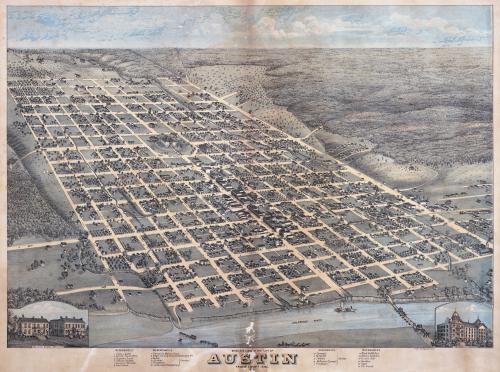
Image Credit:
In my RHE 309S: Critical Reading and Persuasive Writing course at UT Austin, my students are spending the semester studying communities of their choice. The first paper asked students to "map" their community, charting the people, places, events, social practices, and issues that help the community define and organize itself while also examining arguments made about the community. This assignment resembles one of our main first-year writing assignments which asks students to map the arguments made in response to a specific critical situation or issue. Focusing on communities, however, students might examine multiple relevant issues and also texts that aren't primarily argumentative.
One of the main challenges of the paper was arrangement: how can students demonstrate the ways that the constiuent elements of a community shape and respond to one another and the ways that arguments circulate within and around the community, further affecting its contours? Stasis theory was helpful in terms of organizing the arguments made about the community, and we also spent time in class creating mind maps to conceptually organize the various aspects of our communities (the Digital Writing and Research Lab has several lesson plans outlining specific mind mapping activities and assignments). These tools were helpful but abstract, and students ultimately found another component of the assignment more helpful in terms of getting a sense for the organization and development of their communities in time and space.
In addition to the written analysis of texts by and about the community in the paper, this assignment also asked students to produce a map or a timeline using Google Maps or Dipity (you can find the assignment description here). Google allows you to overlay content onto its maps, marking locations of interest and adding annotations, links, and embedded media, and Dipity's timelines offer similar opportunities for composing multimedia texts. These digital writing environments allowed students to engage their communities and relevant texts in new and often more productive ways. Many students felt that, after working on their maps and timelines, they were better prepared to map the broader contours of their communities in prose.
For example, one of our most challenging concepts for this assignment was kairos, attending to shifting contexts over time. Students could develop a sense for ways that an argument might respond to a recent event, but beyond this, kairos was difficult to wrap our heads around. The timeline activity proved particularly helpful here, as students were able to create representations that captured how their communities had changed over time. In a quick glance, we could see how different events and developments led to shifts in a community's priorities, its place in the public sphere, its sense of stability and cohesiveness, and its broader orientation toward the world.
Looking at some of these projects in greater depth gives a sense for the opportunities made available by mapping community in multimedia spaces. A student considering the remix artist community charted a history of recording technologies, the rise of the DJ, and the spread of dance halls going back to the phonograph. What would have taken up too much time and been too broad for the perspective of the paper became an insightful overview that placed remix artists in a long tradition of social practices organized around recorded sound. A student focusing on human trafficking explored global responses to this human rights violation by attaching policies to specific locations. In her paper, this student produced the most sophisticated analysis in the class, demonstrating a nuanced understanding of the relationship between specific groups within the community, their mode of response, and place, an understanding facilitated by her ability to map these relationships on a map. A student looking at the community invested in nanotechnologies traced relevant advancements back to the use of Damascus steel in swords, a practice whose techniques "created carbon nanotube fibers within the blades, giving the swords unparalleled strength and flexibility."
Maps and timelines offer students different logics and processes of engagement, translating communities from static entities to assemblages unfolding in time and space.

